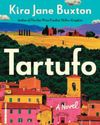
Kung fu movies and musicals are essentially the same thing. Once you understand this, you’ll better understand how to properly structure your stories and connect your characters more deeply with your audience.
Trust me: The more we dig, the more sense it’s going to make.
Whether you’re watching Th e Sound of Music or Crouching Tiger, Hidden Dragon, a group of people come together, and as they interact, their emotions grow—until they boil over.
At which point, there is singing or there is fighting. Th at emotional peak is like the crest of a wave. Your pulse rises. Your senses are engaged. Like all waves, it must recede, and the story dips down
into the trough. That cooling off period is like a pressure release valve. Th e characters need it, but so do you.
Because there’s another wave coming.
That’s what waves do—they rise and fall, much like a story should. And in a really good story, those crests and troughs are going to get bigger as you go along, building to a climax: a soul-stirring song or a fight to determine someone’s fate.
Good fights and good songs are cool, sure, but they’re not there because they’re cool. They advance the story. They make you a promise. Most of all, they make the characters more accessible and draw you closer to them. On a technical level, these genres are great for establishing their authority. But on an emotional level, putting characters in a place of emotional or physical vulnerability makes it easier to identify with them—and to root for them.
It’s in recognizing these things that you can become a better storyteller.
World-Building
Denne historien er fra May - June 2024-utgaven av Writer’s Digest.
Start din 7-dagers gratis prøveperiode på Magzter GOLD for å få tilgang til tusenvis av utvalgte premiumhistorier og 9000+ magasiner og aviser.
Allerede abonnent ? Logg på
Denne historien er fra May - June 2024-utgaven av Writer’s Digest.
Start din 7-dagers gratis prøveperiode på Magzter GOLD for å få tilgang til tusenvis av utvalgte premiumhistorier og 9000+ magasiner og aviser.
Allerede abonnent? Logg på

What Is Your Story Question?
Revision and editing advice to take your first draft to the next level.

Writing for the People We Hope to Become
Elisa Stone Leahy's new middle-grade novel, Mallory in Full Color, tackles the in-between moments of adolescence, when who we are and who we want to become collide.

Creating Community
Whether hot off the presses or on the shelves for years, a good book is worth talking about.

Pat Barker
The Booker Prize-winning author of Regeneration shares the role characters play in developing novel ideas and explains what appeals to her about reimagining mythology.

How to Write in Different Genres
Emiko Jean and Yulin Kuang share tips and strategies for how they successfully write in different genres and mediums.

The Shortest Distance Between Two Points
Ten tips for writing a novel with 100-word stories.

Mayfly Marketing
How to sell your novel in a short-attention-span world.

"You'll be a great essay".
How to write six types of personal essays by finding the funny in your life.

The Idea Factory
Tired of staring at an empty screen? Unlock your inner fiction generator with these surprising inspiration techniques.

Seinfeld Was Right: That's a Story
Use mundane moments from everyday life to create stories that pack a punch.